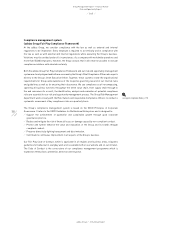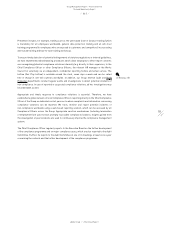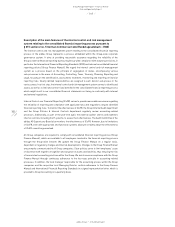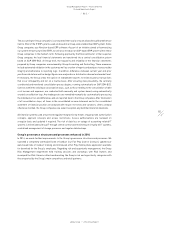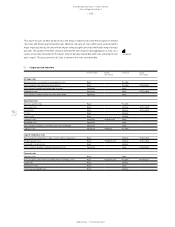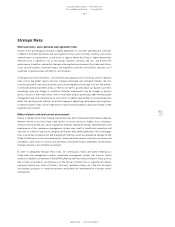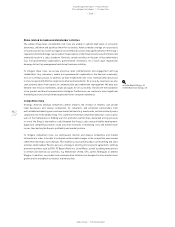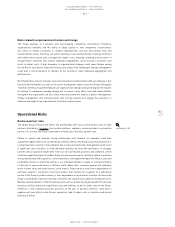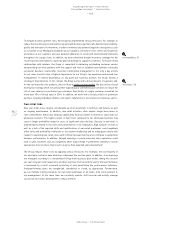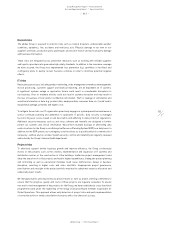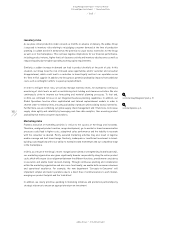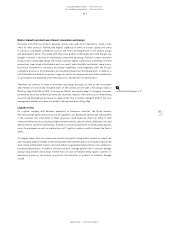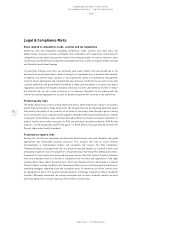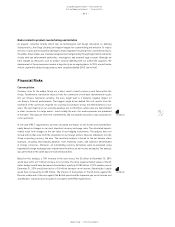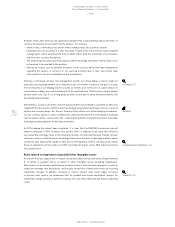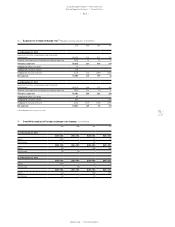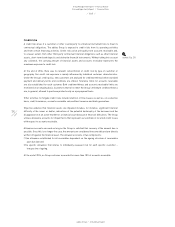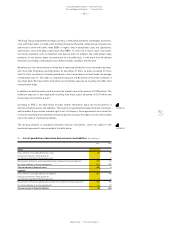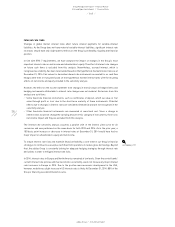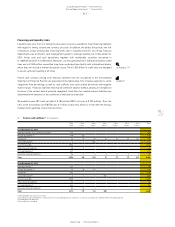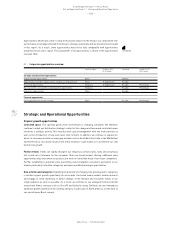Reebok 2014 Annual Report Download - page 172
Download and view the complete annual report
Please find page 172 of the 2014 Reebok annual report below. You can navigate through the pages in the report by either clicking on the pages listed below, or by using the keyword search tool below to find specific information within the annual report.
168
2014
/
03.5
/
adidas Group
/
2014 Annual Report
Group Management Report – Financial Review
Risk and Opportunity Report
/
Operational Risks
Inventory risks
As we place initial production orders around six months in advance of delivery, the adidas Group
is exposed to inventory risks relating to misjudging consumer demand at the time of production
planning. A sudden decline in demand has the potential to cause excess inventories for the Group
as well as in the marketplace. This can have negative implications for our financial performance,
including product returns, higher levels of clearance activity and inventory obsolescence as well as
reduced liquidity due to higher operating working capital requirements.
Similarly, a sudden increase in demand can lead to product shortfalls at the point of sale. In this
situation, our Group faces the risk of missed sales opportunities and/or customer and consumer
disappointment, which could lead to a reduction in brand loyalty and hurt our reputation as an
On-Time In-Full supplier. In addition, the Group faces potential profitability impacts from additional
costs such as airfreight in efforts to speed up replenishment.
In order to mitigate these risks, we actively manage inventory levels, for example by continuous
monitoring of stock levels as well as centralising stock holding and clearance activities. We also
continuously strive to improve our forecasting and material planning processes. To that end,
in 2014, we continued to focus on our integrated business planning capabilities. In addition, our
Global Operations function offers sophisticated and tailored replenishment models in order to
shorten order-to-delivery times, ensuring availability of products while avoiding excess inventories.
Furthermore, we are combining our global supply chain management and IT functions, to increase
supply chain agility and reliability by leveraging real-time data analytics, thus ensuring product
availability that meets consumer expectations.
Marketing risks
Flawless execution of marketing activities is critical to the success of the Group and its brands.
Therefore, unaligned product creation, range development, go-to-market or brand communication
processes could lead to higher costs, suboptimal sales performance and the inability to resonate
with the consumer as desired. Poorly executed marketing activities may also result in negative
media coverage and hurt brand image. Similarly, inadequate or insufficient investment in brand-
building could negatively affect our ability to maintain brand momentum and our competitive edge
in the marketplace.
In 2014, as a result of the Group’s recent reorganisation aimed at strengthening ‘brand leadership’,
our marketing organisation was given significantly broader responsibility along the entire product
cycle, which will ensure closer alignment between the different functions, provide more consistency
in execution and enable faster decision-making. Through continuous planning and collaboration
within the marketing organisation and also cross-functionally, we enable both consumer relevance
and operational excellence. For example, the new department ‘Concepts-to-Consumer’ will
implement simpler and faster operations due to a direct flow of communications to each market,
merging our product footprint and the ‘look & feel’.
In addition, we clearly prioritise spending in marketing initiatives and promotion partnerships by
strategic relevance to ensure an appropriate return on investment.
see Internal Group Management System, p. 98
see Global Operations, p. 66


